| Film | Preference (0/10) | Memorable Scene | Film Element Focus |
| Whiplash | 10/10 | Car Crash Scene | Editing |
Whiplash First Response
| Movie | Rating | Memorable Scene | Film Element Focus |
| Whiplash | 9/10 | Final Band Performance | Editing |
WHIPLASH FIRST RESPONSE
| Film | Preference (0/10) | Memorable Scene | Film element focus |
| Whiplash (2014) | 10/10 | Are you rushing or dragging scene | Editing |
EDITING ESSAY TASK- WHIPLASH

Q. How does Chazelle/Cross use editing techniques to build tension in the final scene of Whiplash?
500-800 (spell-checked) words + illustration for your response.
DEADLINE MONDAY 2ND NOVEMBER
EDITING TECHNIQUES TO CONSIDER:
- Cutting to the beat – rhythmic montage
- Montage – ellipsis
- J Cuts
- L Cuts
- Match on Action
- Graphic Match
- Pacing
- The Kuleshov Effect
- Cross Cutting /Shot-Reverse Cutting
Whiplash first response
| Film | Preference | Memorable Scene | Film Element Focus |
| Whiplash(2014) | 10/10 | Andrew’s final performance. | Editing |
Miller and sweep storyboard
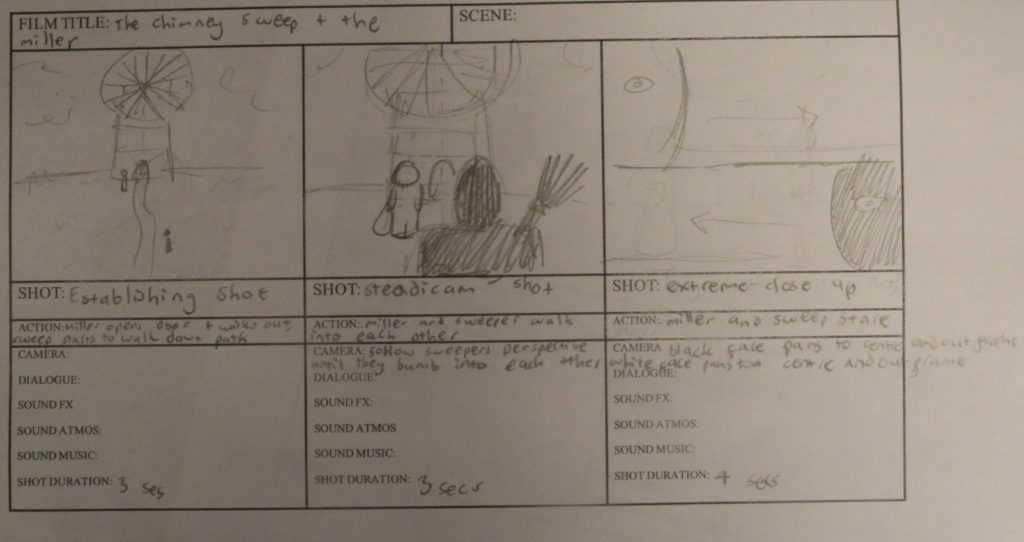
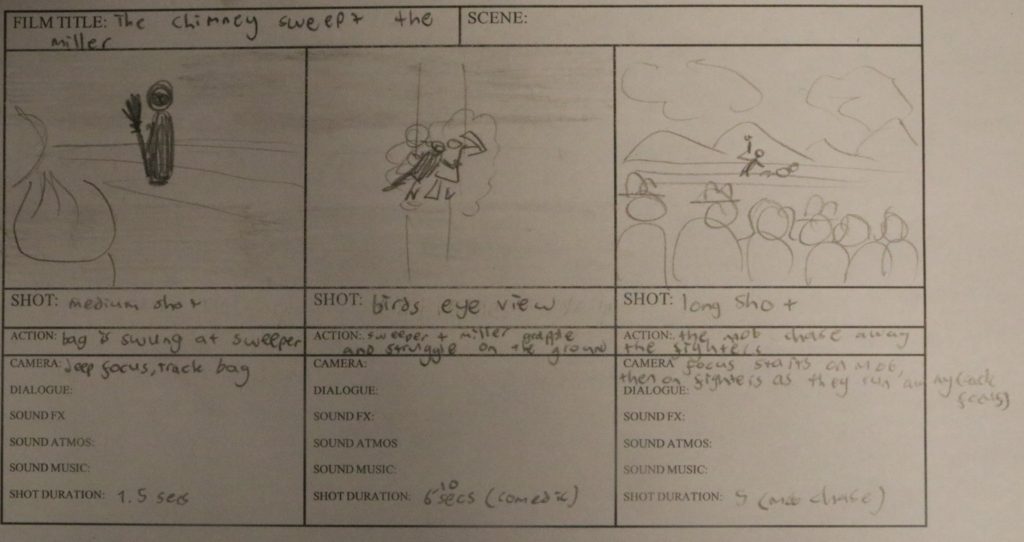
Stanley kubrick cinematography techniques
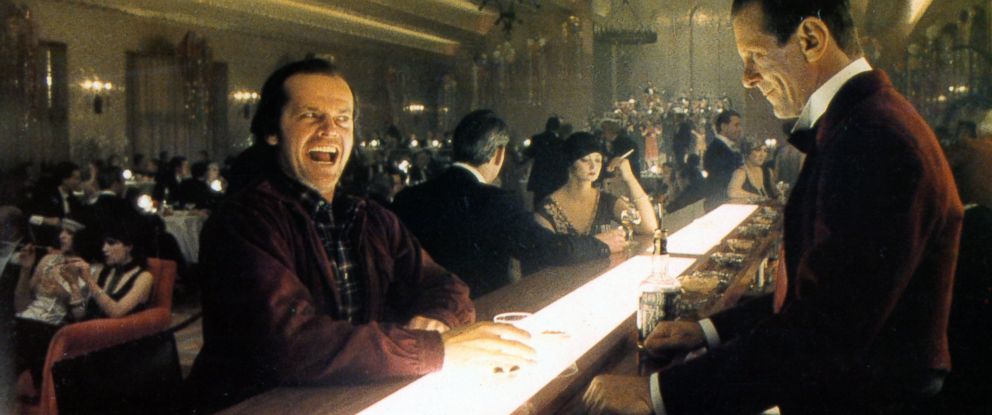
Deep Focus – Deep focus is when everything on the screen is in focus. I believe that deep focus is used in these scene, so the audience can see the 1920s party going on in the background, which makes them feel puzzled and uneasy.
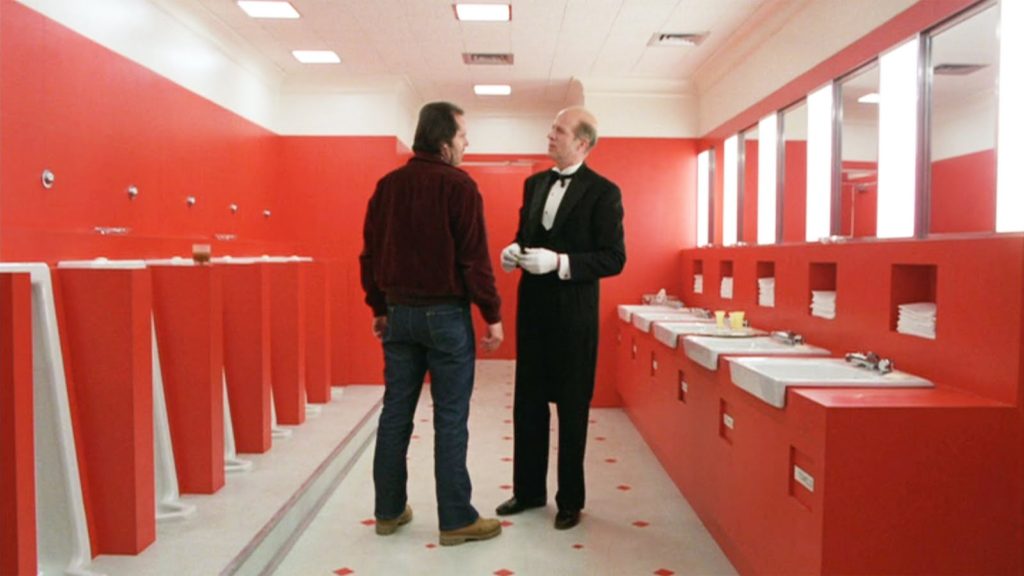
One Point Perspective – A view of a scene with only one vanishing point, that is filmed straight on. It is sued in this scene to unnerve the viewer, as it looks incredibly unnatural.

Steadicam Long Take – Steadicam is a mounting for the camera, which keeps it steady for filming. This Steadicam long take is used to follow Danny through the hotel. It makes the audience feel like something is watching Danny, maybe even that the hotel is watching Danny, which creates an uneasy feeling.
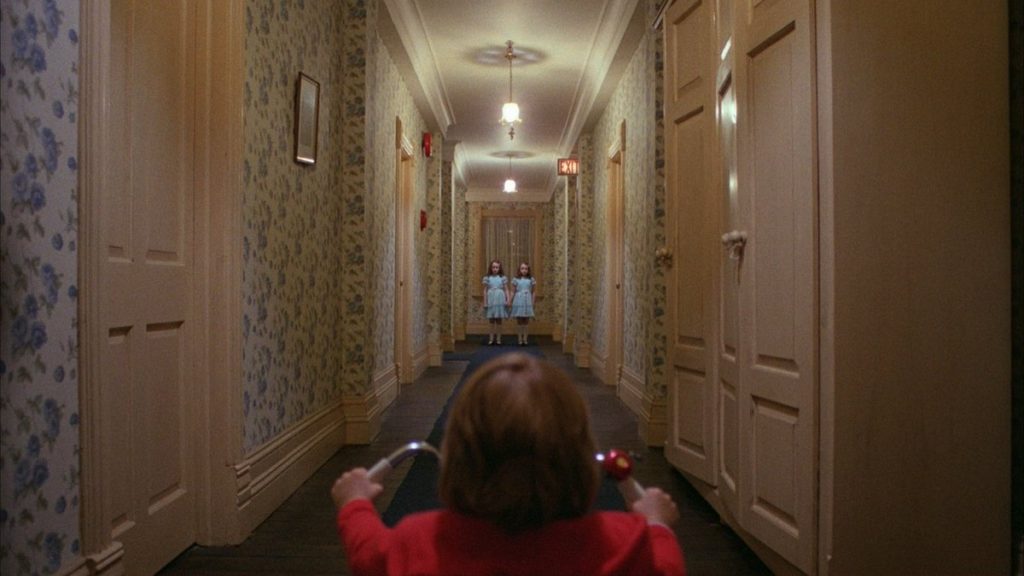
Symmetry – Symmetry is when something is identical on both sides. in this film, it is used to create an unnatural feeling, as things in real life are often asymmetrical.
